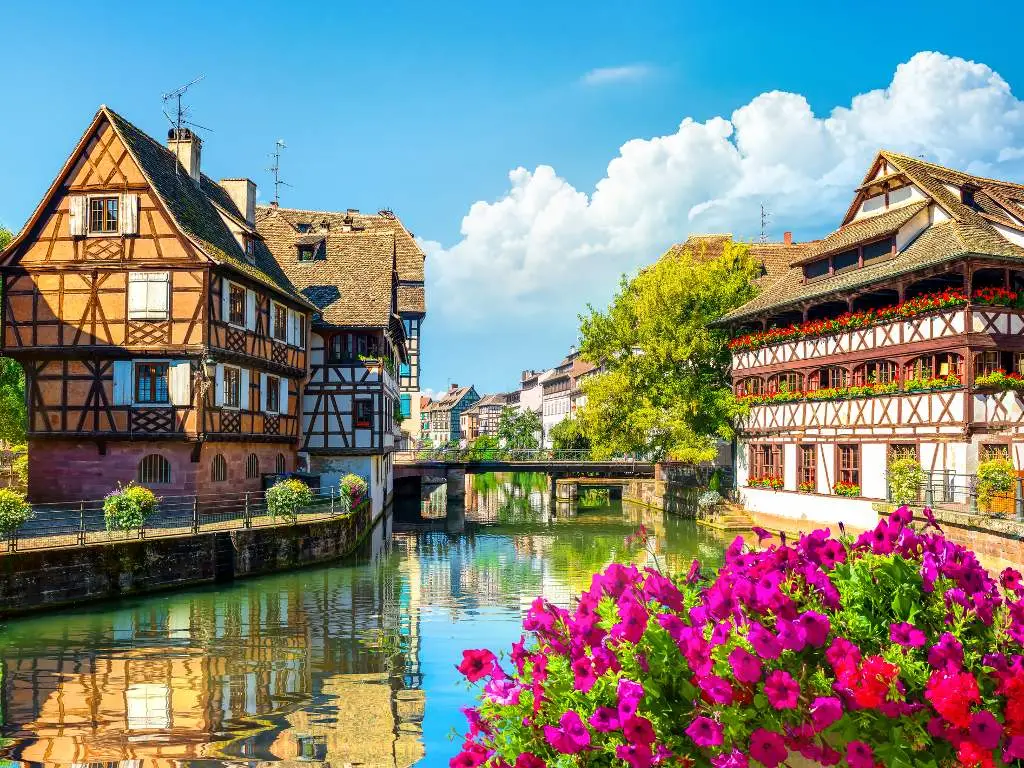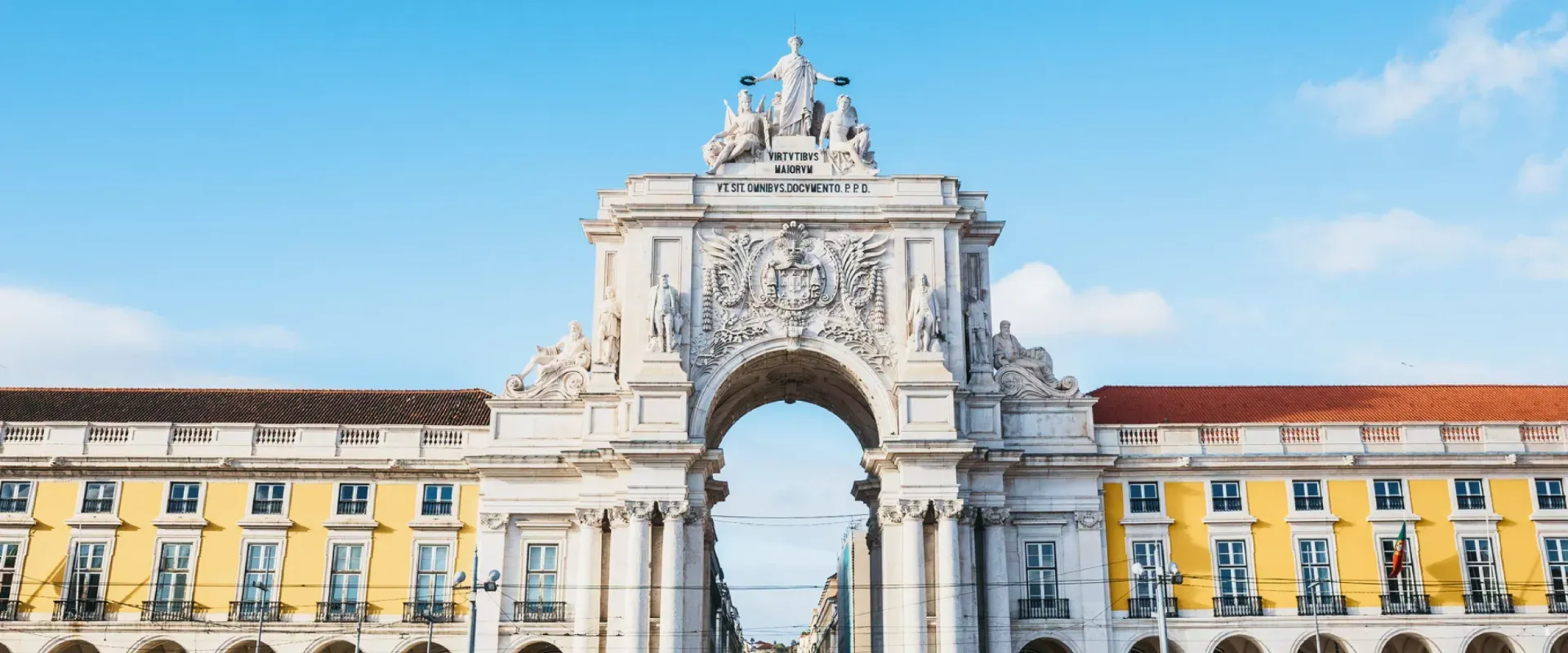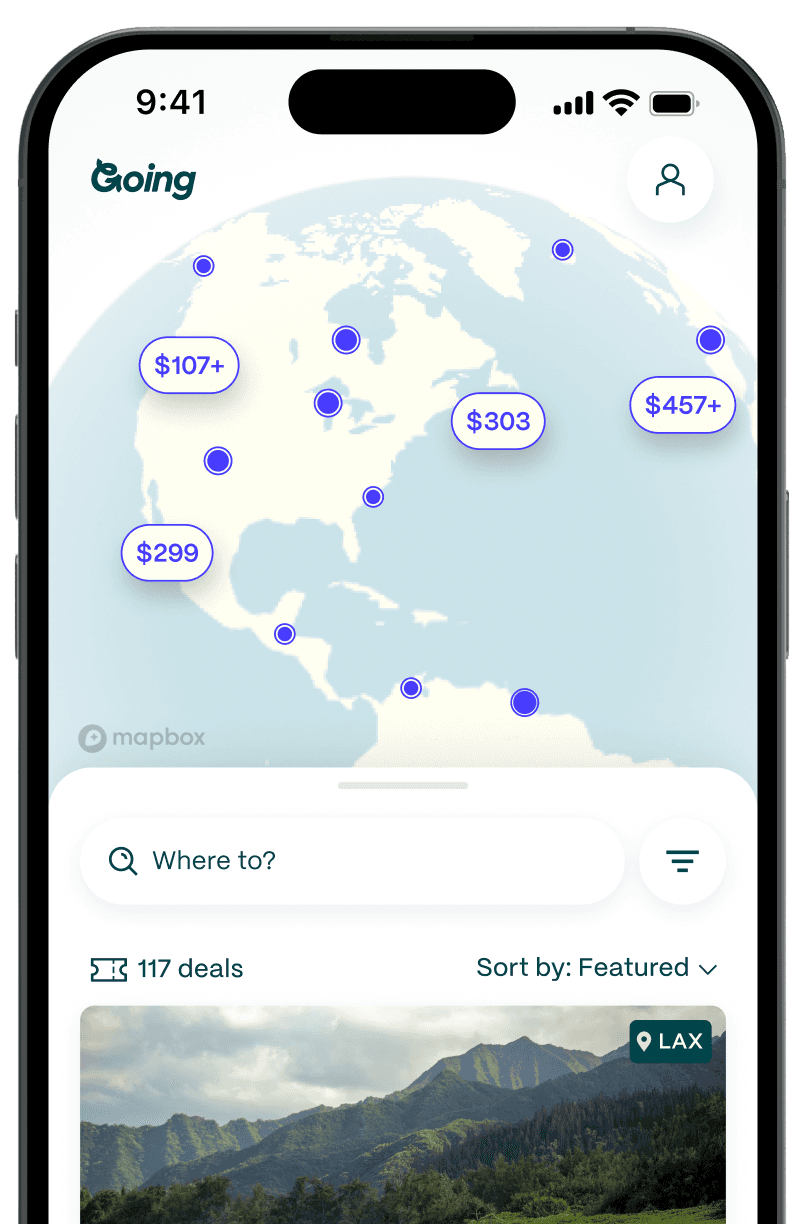
Day Trips From Paris: The Best Spots Around the French Capital
Table of Contents
There are endless things to see in Paris, but here’s my little secret: You can make your trip just as (if not more) enriching with just a short train ride or drive. Whenever I'm in Paris, I always save myself some days to explore destinations nearby. From royal palaces and Impressionist gardens to medieval towns and seaside cliffs, there are countless places worth visiting. Plus, the rail connections make it easy to head off to another corner of France—or even a neighboring country—and still be back in Paris before bedtime.
Key takeaways
Paris makes the perfect base for exploring France and destinations in nearby countries by train. Many top day trips are within two hours of Paris by train, and the SNCF and regional TER networks make travel simple and affordable. Destinations like Versailles and Giverny can be explored in half a day.
Palaces and gardens
- Versailles: The most famous day trip from Paris, featuring the lavish palace and its legendary gardens.
- Giverny: Step into Monet’s world at his pastel home and the gardens that inspired his “Water Lilies” series.
- Château de Fontainebleau: One of France’s largest royal residences, filled with Renaissance art and surrounded by forest.
- Vaux-le-Vicomte: A Baroque masterpiece often called the inspiration for Versailles.
- Château de Chantilly: Known for its fine art collection, landscaped gardens, and its namesake whipped cream.
History and culture
- Normandy: Visit the D-Day landing beaches, war memorials, and charming coastal villages.
- Reims: The heart of the Champagne region, where you can explore grand cellars and the historic coronation cathedral.
- Rouen: A medieval city tied to Joan of Arc, filled with half-timbered houses and Gothic architecture.
- Provins: Step back in time in this UNESCO-listed fortified town, complete with medieval ramparts.
- Chartres: Home to one of Europe’s most stunning Gothic cathedrals and intricate stained glass windows.
Entertainment and unique experiences
- Disneyland Paris: A must for families or anyone craving a bit of theme park magic just 40 minutes from the city.
- Loire Valley: Discover a landscape of chateaux, vineyards, and riverside villages.
- Bruges, Belgium: Cross the border for the day to see canals, cobblestones, and chocolate shops in one of Europe’s most charming cities.

Top day trip destinations from Paris in France
Versailles
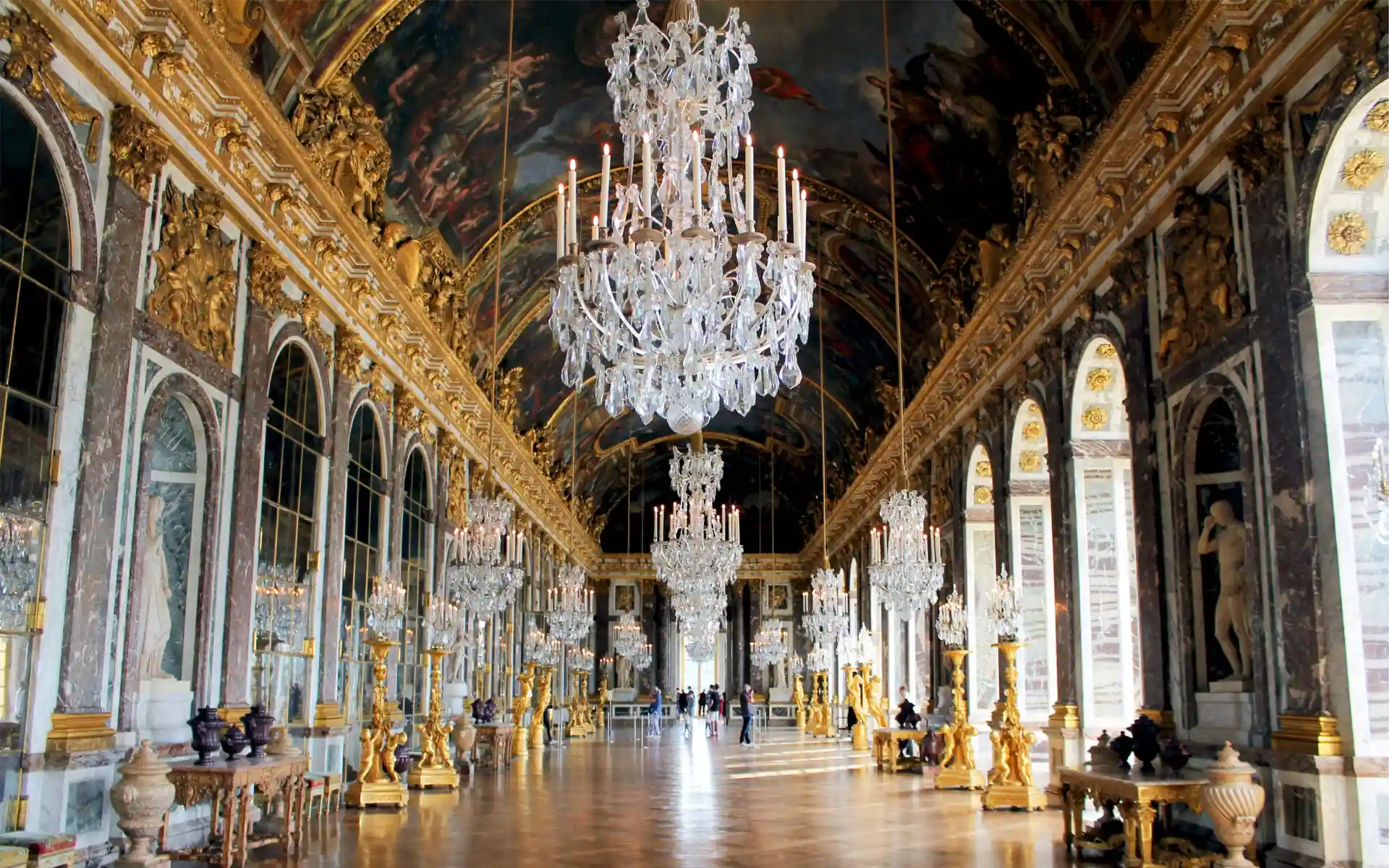
Just 30 minutes from central Paris, the Palace of Versailles remains one of France’s most iconic landmarks. Wander through the glittering Hall of Mirrors, explore vast manicured gardens, and see where French royalty once ruled in opulent splendor.
- Main attractions: Hall of Mirrors, the Royal Chapel, the Gardens of Versailles
- Distance: ~1 hour by train
- Transportation: RER C train from central Paris
Important details
- €19 for palace entry; gardens open daily and free except on Musical Fountain Show days.
- The Palace of Versailles is open Tuesday–Sunday, 9am–6:30 pm (April–October) and until 5:30pm (November–March). Closed Mondays and major holidays.
- It’s advised to book your tickets in advance.
Loire Valley castles

Southwest of Paris, the Loire Valley is a storybook site with chateaux surrounded by vineyards and riverside towns. Visit Chambord for Renaissance grandeur, Chenonceau for elegance, and Amboise for royal history—all reachable via tours or train connections from Paris.
- Main attractions: Château de Chambord, Château de Chenonceau, Château d’Amboise
- Distance from Paris: ~120 miles (2 hours by train)
- Transportation: High-speed train (TGV) from Paris Montparnasse
Important details
- Most castles (like Chambord and Chenonceau) open around 9am and close between 5–7pm depending on the season.
- Advance tickets can be purchased online or combined in regional passes for multiple chateau visits.
- Guided day tours from Paris (€50–€100) often include transport, wine tastings, and skip-the-line access.
Giverny
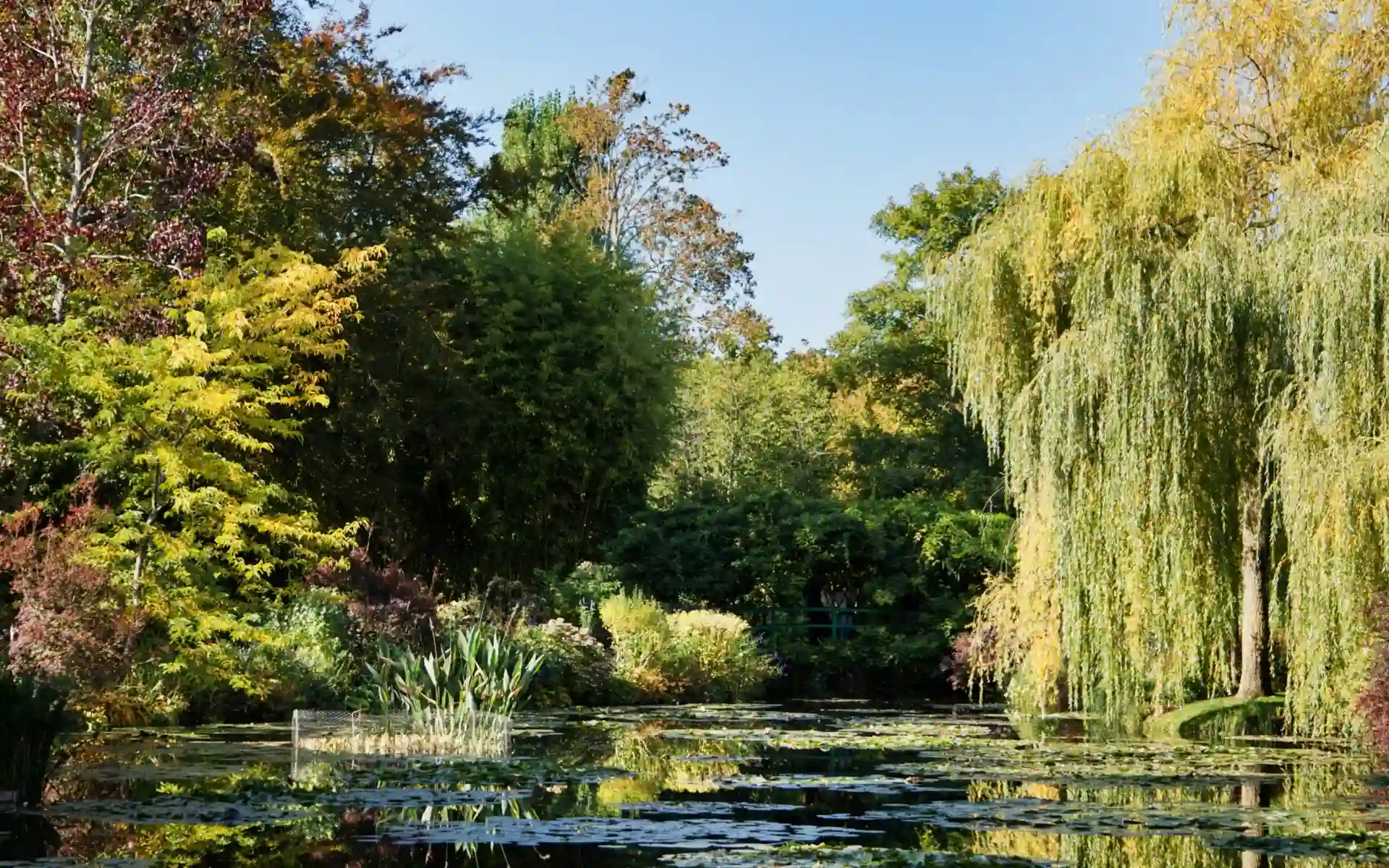
Claude Monet’s home and gardens in Giverny are a living canvas of color. The famous lily pond and Japanese bridge inspired some of the world’s most beloved Impressionist works. This destination is especially beautiful between April and October.
- Main attractions: Monet’s House and Gardens, Musée des Impressionnismes
- Distance from Paris: ~50 miles (1 hour)
- Transportation: Train from Gare Saint-Lazare to Vernon + short bus/taxi
Important details
- Claude Monet’s House and Gardens are open daily from April 1 to November 1, 9:30am–6pm. Closed during winter.
- Tickets (around €12) can be booked online; combined passes with the Musée des Impressionnismes are available.
- Best visited from April–October when flowers are in bloom
Normandy
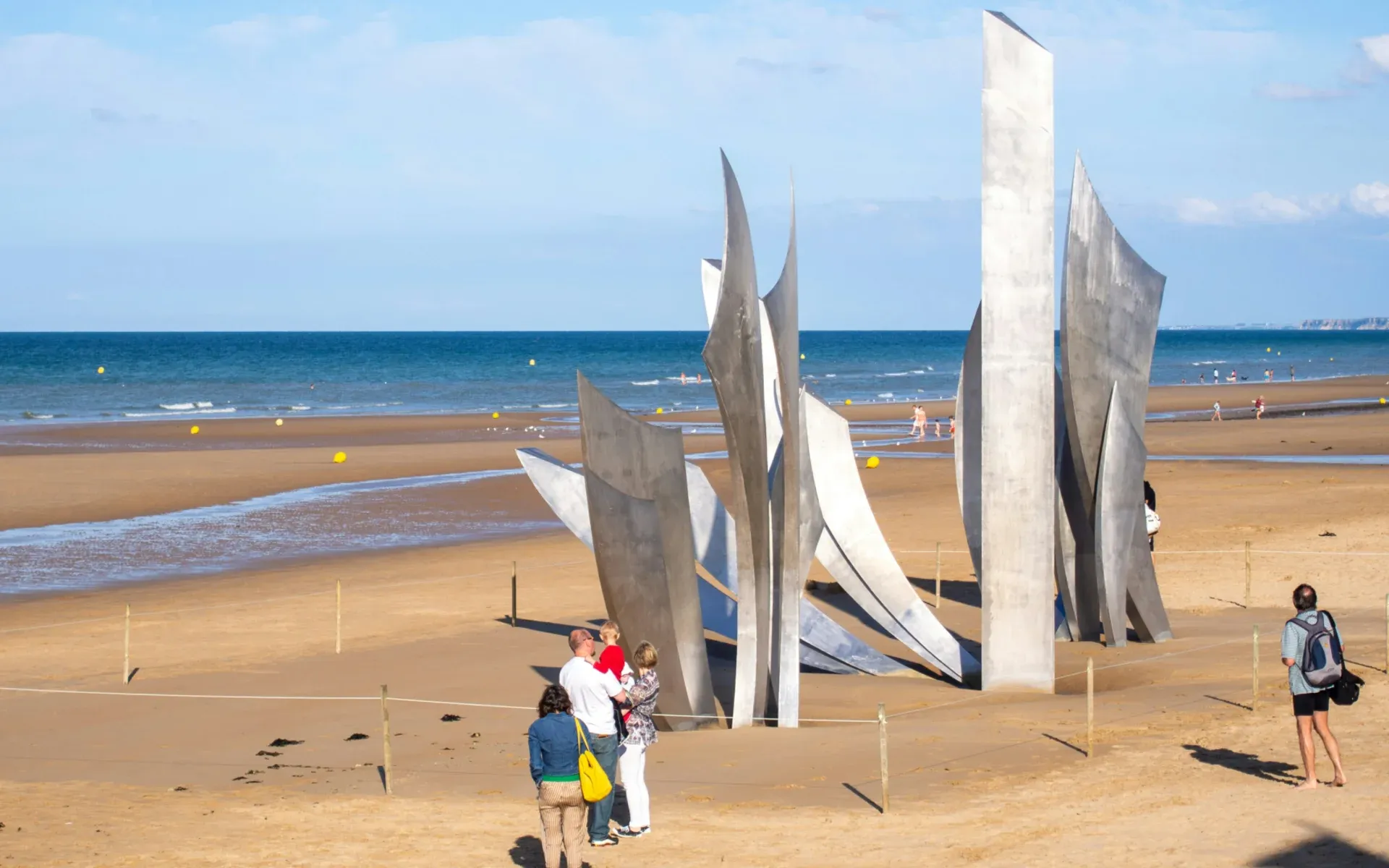
History, coastline, and culture come together in Normandy. Spend the day visiting the D-Day landing beaches, the Bayeux Tapestry, or the charming port of Honfleur. Trains and guided tours make Normandy easily accessible from Paris.
- Main attractions: Omaha Beach, American Cemetery, Bayeux Tapestry Museum, Honfleur port
- Distance from Paris: ~150 miles (2–3 hours)
- Transportation: Direct train to Caen or Bayeux
Important details
- Many D-Day beaches and memorials are open year-round; museum hours vary by site.
- Caen Memorial Museum opens daily 9am–6pm (closes at 7pm in summer).
- Organized tours (€50–€120) include transport and guides.
Reims

Champagne lovers shouldn’t miss Reims, where centuries of coronations took place in its Gothic cathedral. Tour legendary champagne houses like Veuve Clicquot and Taittinger, where you can sample a glass of bubbly straight from the source, and enjoy a refined, compact city that’s only 45 minutes away by train.
- Main attractions: Champagne houses (Veuve Clicquot, Taittinger), Reims Cathedral, Palais du Tau
- Distance from Paris: ~80 miles (45 minutes)
- Transportation: High-speed TGV from Gare de l’Est
Important details
- Notre-Dame de Reims Cathedral is open daily 7:30am–7:30pm, free entry.
- Champagne houses like Veuve Clicquot or Taittinger require advance booking for tours and tastings.
- Most cellars close for part of January and reopen in spring.
Fontainebleau
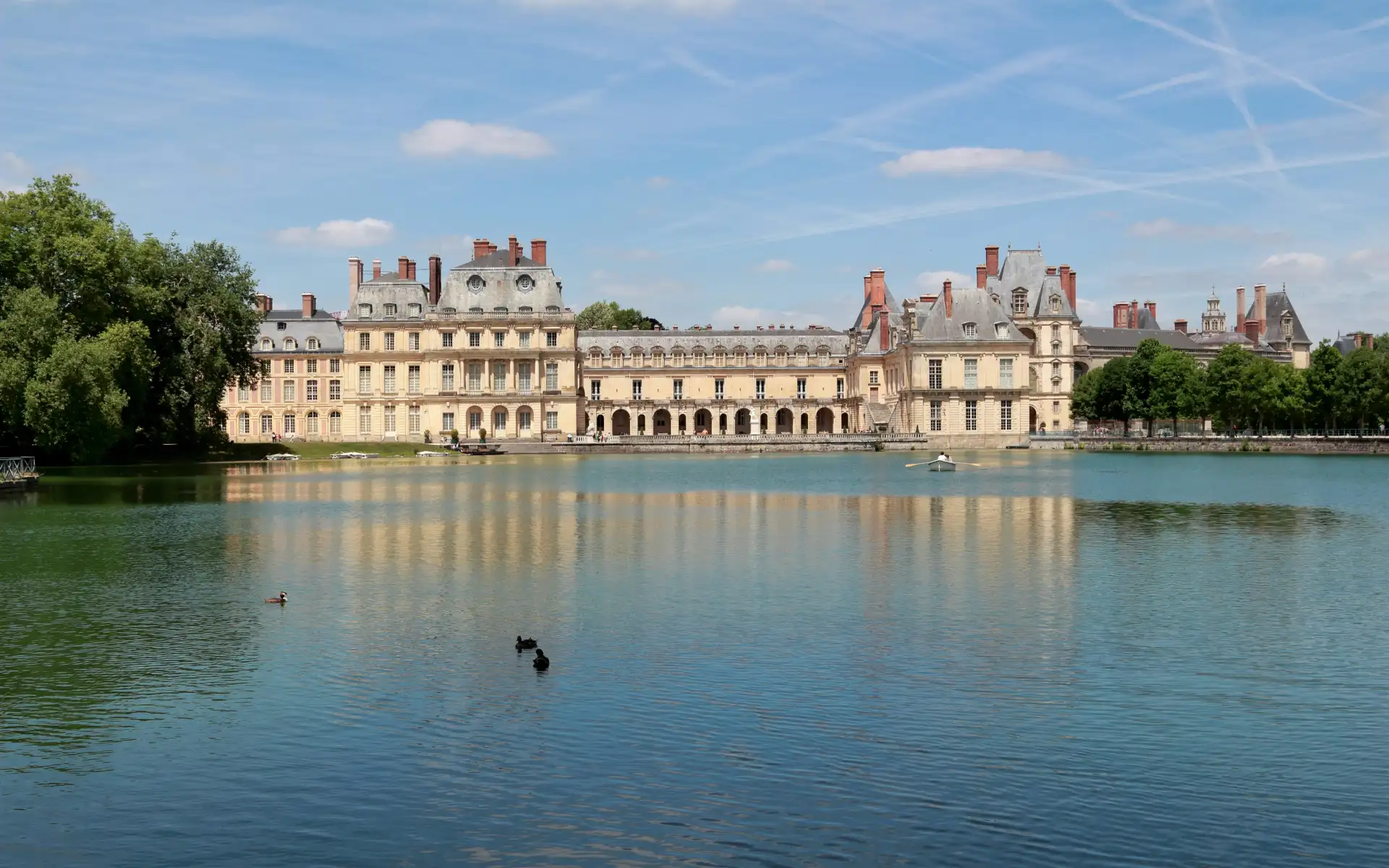
Fontainebleau combines royal history with natural beauty. Its grand chateau—Napoleon’s former residence—is surrounded by an immense forest known for hiking and rock climbing. It’s an ideal escape for travelers seeking both culture and outdoor adventure.
- Main attractions: Château de Fontainebleau, Forest of Fontainebleau
- Distance from Paris: ~40 km (40 minutes)
- Transportation: Train from Gare de Lyon
Important details
- Tickets go for €13 for palace entry.
- Open Wednesday–Monday, 9:30am–6pm (summer) and until 5pm (winter). Closed Tuesdays.
- The surrounding forest is open daily, free of charge.
- Skip-the-line tickets can be booked online or at the train station in advance.
Chartres
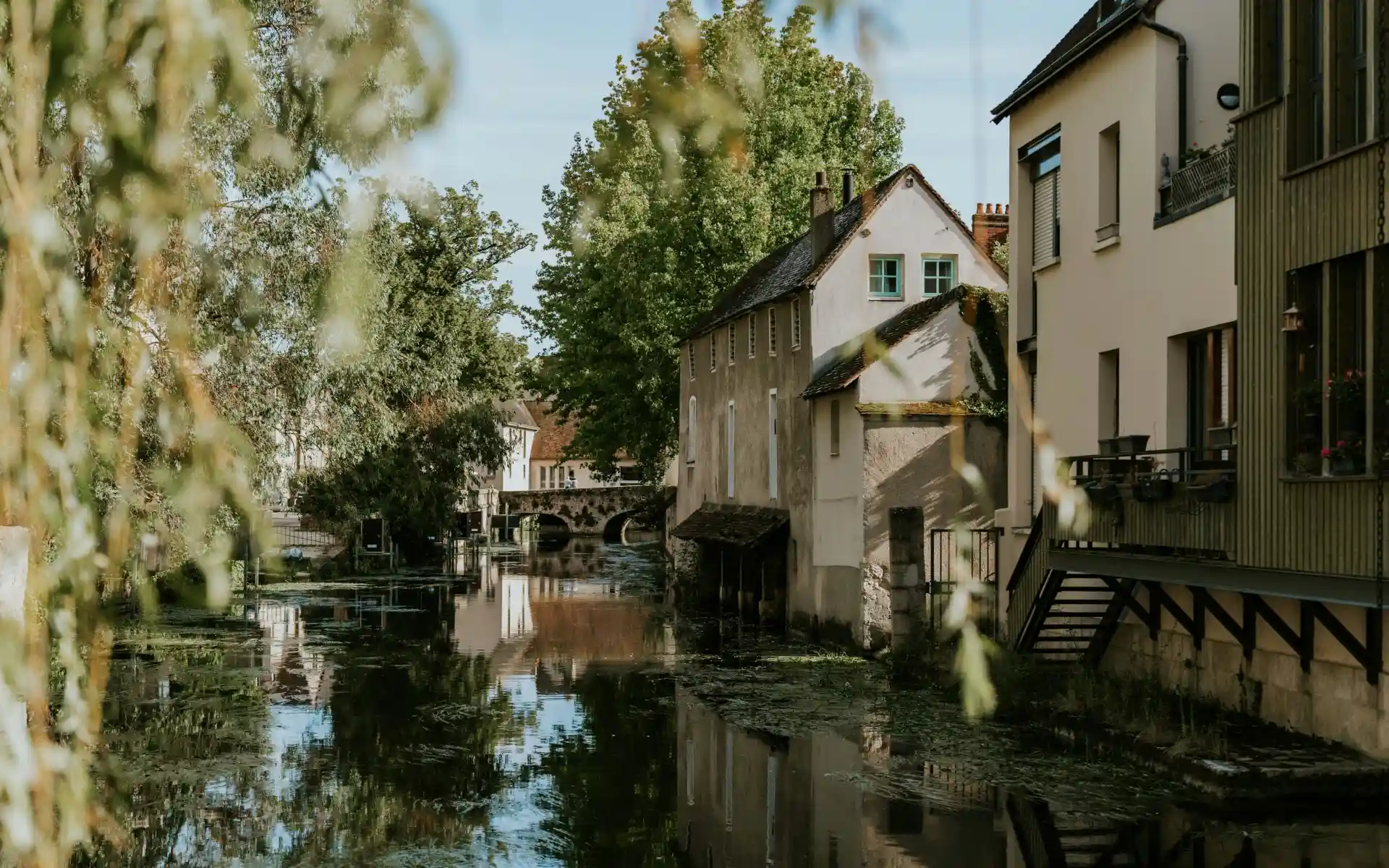
Famous for its UNESCO-listed cathedral and stained-glass windows, Chartres offers a peaceful, authentic look at small-town France. The old town’s narrow lanes and riverside cafes make for a relaxing, scenic day away from Paris.
- Main attractions: Chartres Cathedral, Old Town, Fine Arts Museum
- Distance from Paris: ~55 miles (1 hour)
- Transportation: Direct train from Montparnasse
Important details
- Chartres Cathedral is open daily, 8:30am–7:30pm
- Entry is free; donations accepted.
- The Chartres en Lumières light show runs nightly from April to October.
Provins
A perfectly preserved medieval town just 1.5 hours from Paris, Provins feels like stepping straight into the Middle Ages. This UNESCO World Heritage site was once a major trading hub of the Champagne Fairs. Its ramparts, underground tunnels, and knight shows make it a great option for families and history buffs alike.
- Main attractions: Ramparts, Caesar Tower, Medieval Tunnels, local markets
- Distance from Paris: ~55 miles (1.5 hours)
- Transportation: Train from Gare de l’Est
Important details
- Medieval shows (like the falconry or knight tournaments) operate April–October.
- Town monuments open daily, typically 10am–6pm.
- A Pass Provins provides entry to multiple sites at a discount.
Rouen
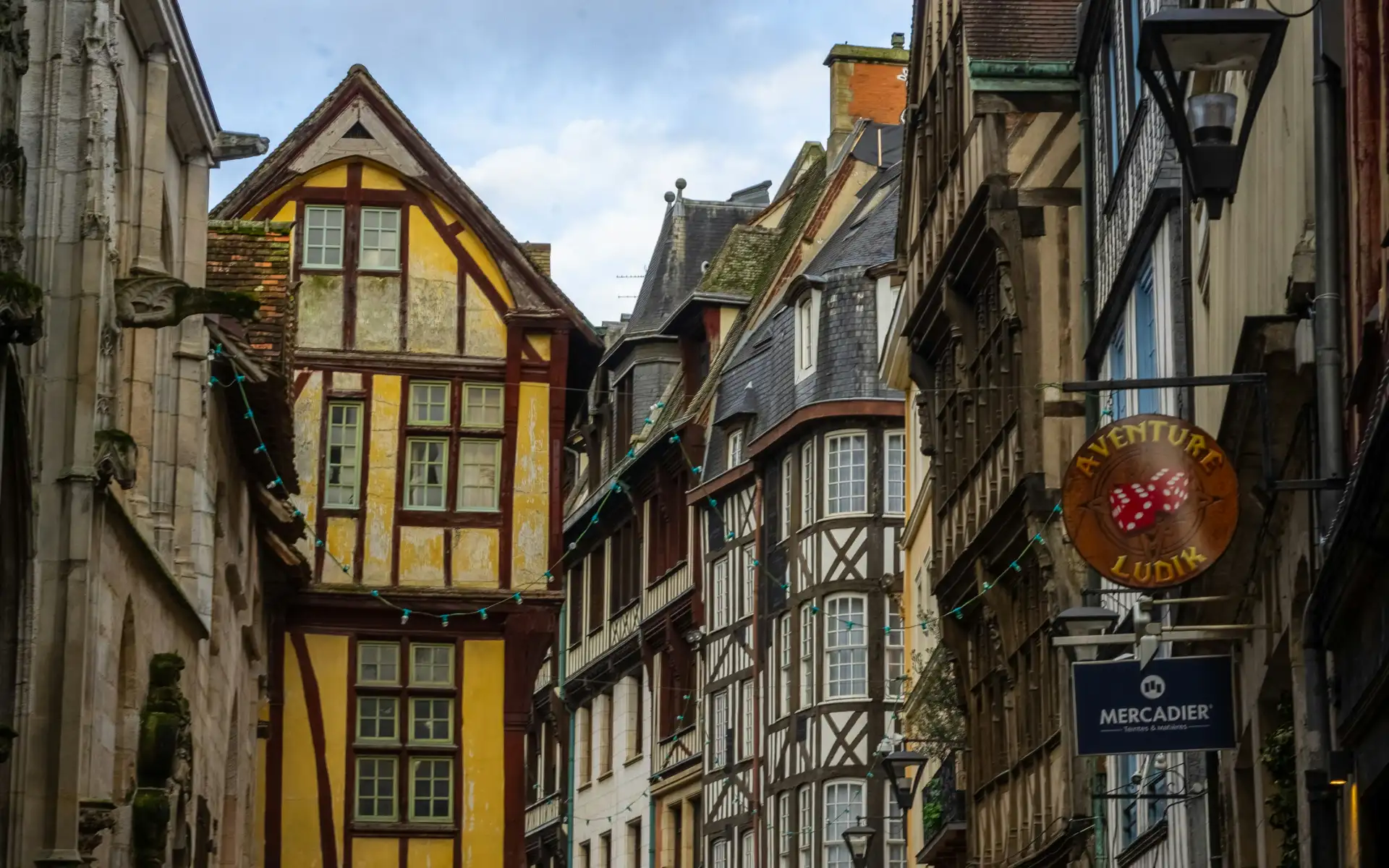
Just 1 hour and 20 minutes from Paris, Rouen blends medieval charm with artistic heritage. Known as the “City of a Hundred Spires,” it’s home to one of France’s most beautiful Gothic cathedrals. Today, Rouen is also a cultural hub with modern cafes, boutiques, and an energetic student atmosphere.
- Main attractions: Rouen Cathedral, Joan of Arc Tower, Old Market Square
- Distance from Paris: ~80 miles (1.5 hours)
- Transportation: Direct train from Saint-Lazare
Important details
- Rouen Cathedral is open daily 7:30am–7pm, free entry.
- The Jeanne d’Arc museum opens Tuesday–Sunday, 10am–7pm.
- Summer sound-and-light shows project on the cathedral’s facade nightly (June–September).
Auvers-sur-Oise
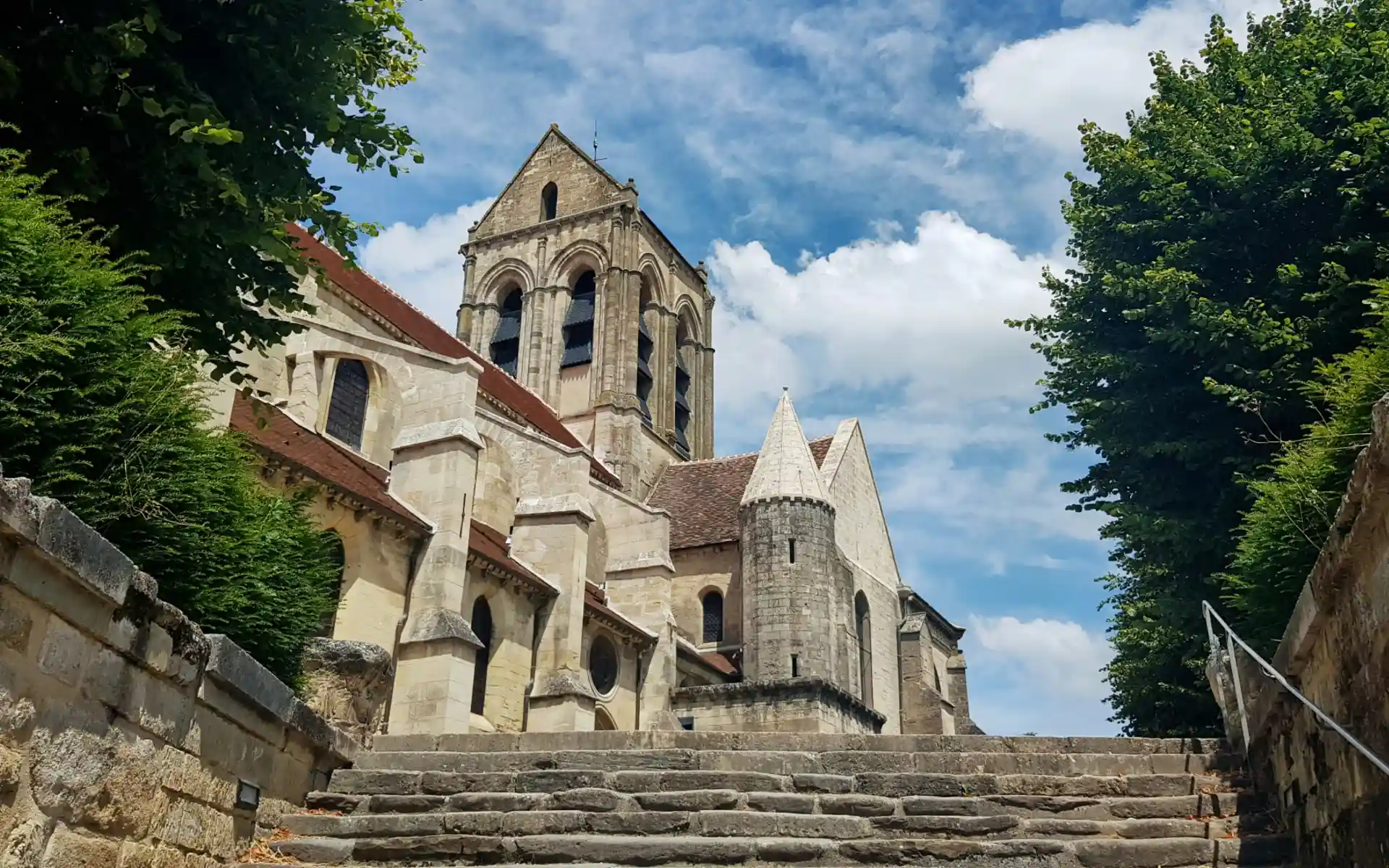
Art lovers will appreciate Auvers-sur-Oise, as it’s Vincent van Gogh’s final resting place. You can visit the church and wheat fields he famously painted, plus the pension where he spent his last days.
- Main attractions: Van Gogh’s House, Church of Auvers, Van Gogh’s Tomb
- Distance from Paris: ~20 miles (45 minutes)
- Transportation: Train from Gare du Nord or Saint-Lazare
Important details
- Van Gogh’s House and Auberge Ravoux are open March–October, Wednesday–Sunday.
- The Van Gogh Trail is self-guided and free to access year-round.
- Arrive before 10am to enjoy the village before tour groups arrive.
Maincy
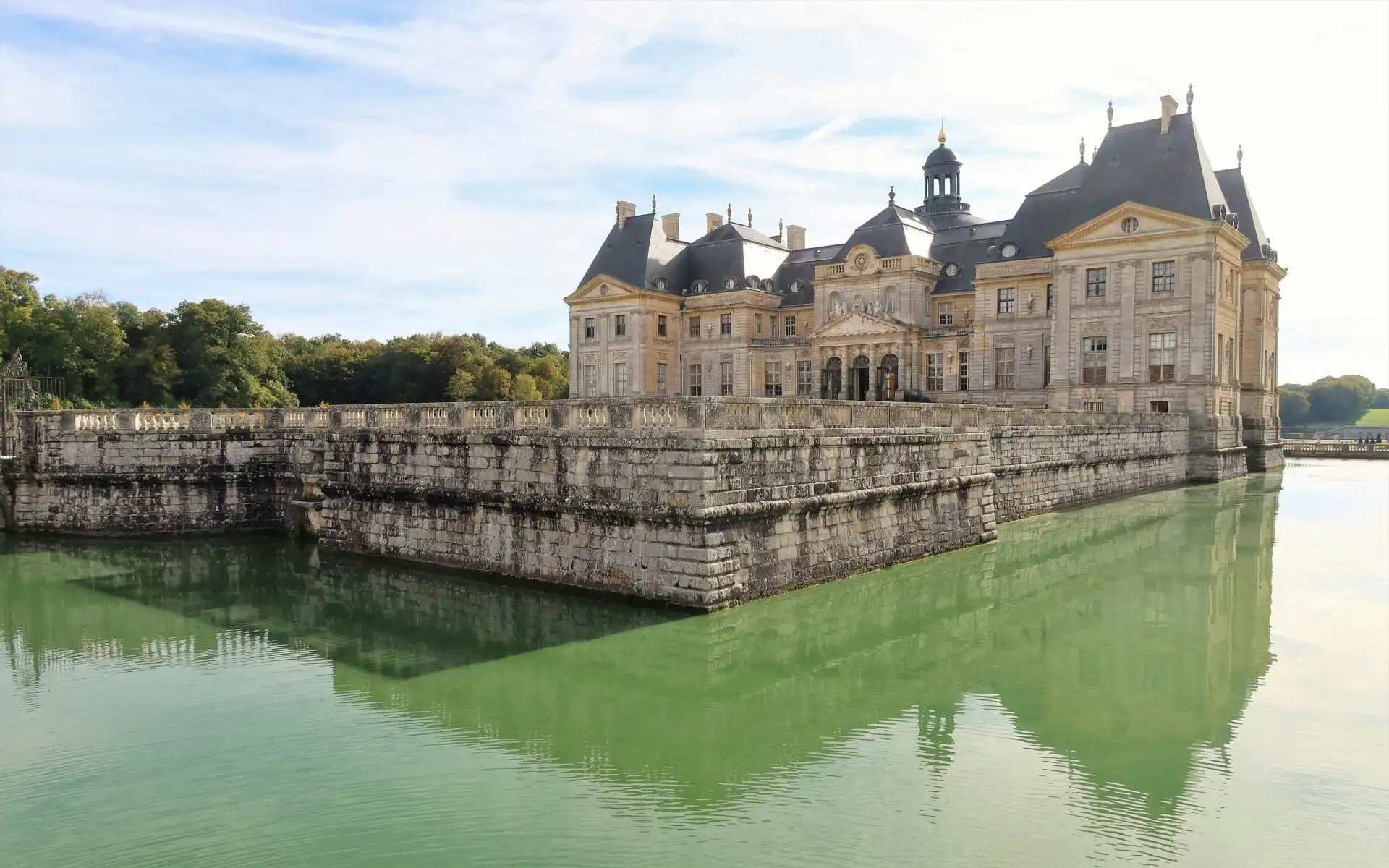
About an hour southeast of Paris, the Château de Vaux-le-Vicomte in Maincy is one of France’s most dazzling examples of Baroque architecture. The chateau also hosts enchanting Christmas displays each winter, making it a year-round destination for lovers of art, architecture, and romance. Smaller and more intimate than Versailles, Vaux-le-Vicomte offers elegance without the crowds.
- Main attractions: Château de Vaux-le-Vicomte, French gardens, carriage museum
- Distance from Paris: ~55 km (1 hour)
- Transportation: Train to Melun + shuttle
Important details
- Entry costs €16–€20.
- Open daily 10am–6pm (April–November). Closed in winter except for special Christmas events.
- Candlelight evenings every Saturday in summer are a highlight; book tickets in advance.
Étretat
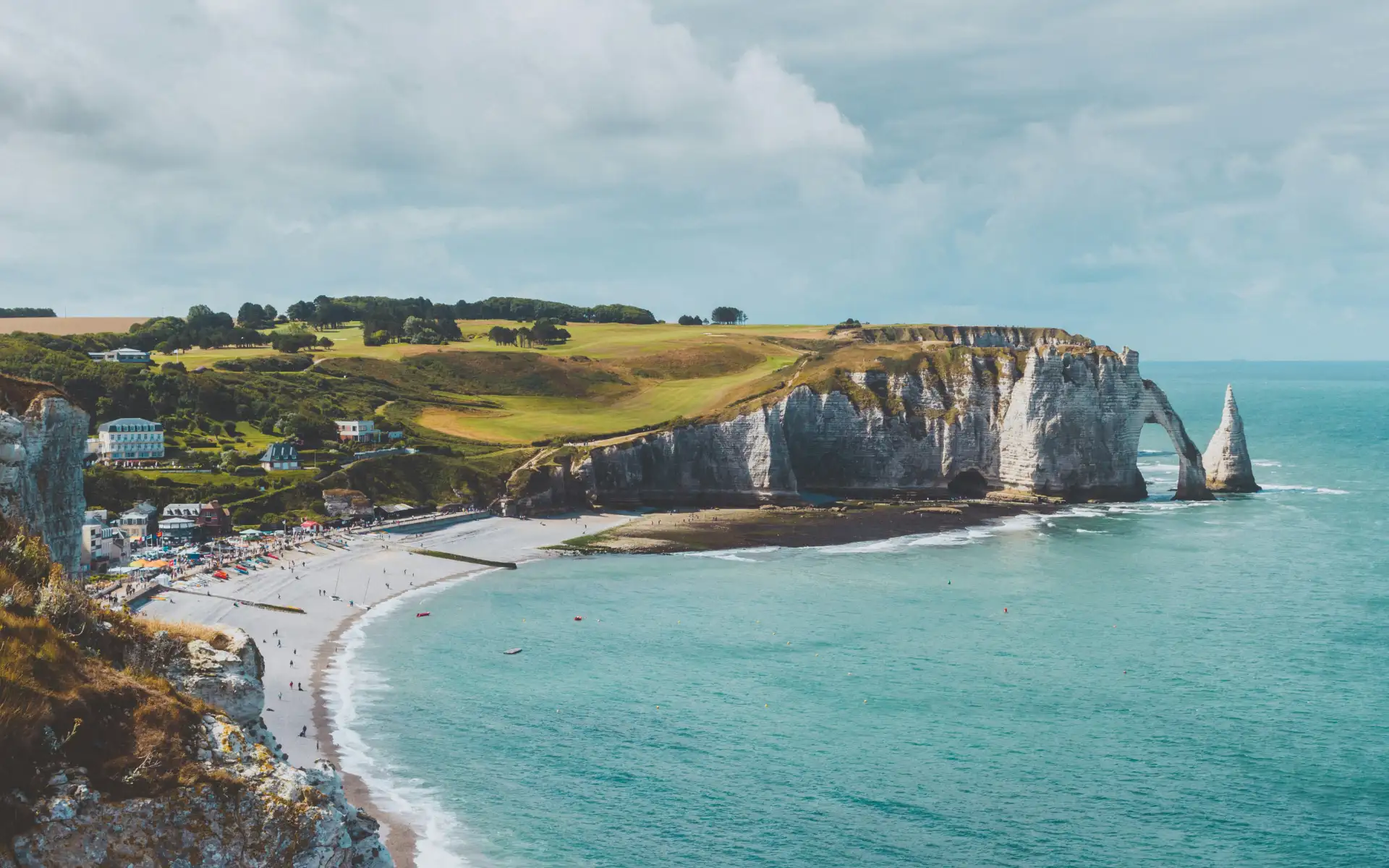
Perched along Normandy’s Alabaster Coast, Étretat is one of France’s most stunning seaside escapes with its dramatic white cliffs. Just over two hours from Paris by train and bus, the village offers postcard views of the Falaise d’Aval, Needle Rock, and the turquoise waters below.
- Main attractions: Falaise d’Aval, Needle Rock, coastal views
- Distance from Paris: ~130 miles (1 hour)
- Transportation: Train from St Lazare + bus
Important details
- The cliffs and beach are accessible year-round, free of charge.
- Visit early morning or late afternoon for best light and fewer crowds.
- The Gardens of Etretat open daily 10am–7pm (April–October).
Chantilly
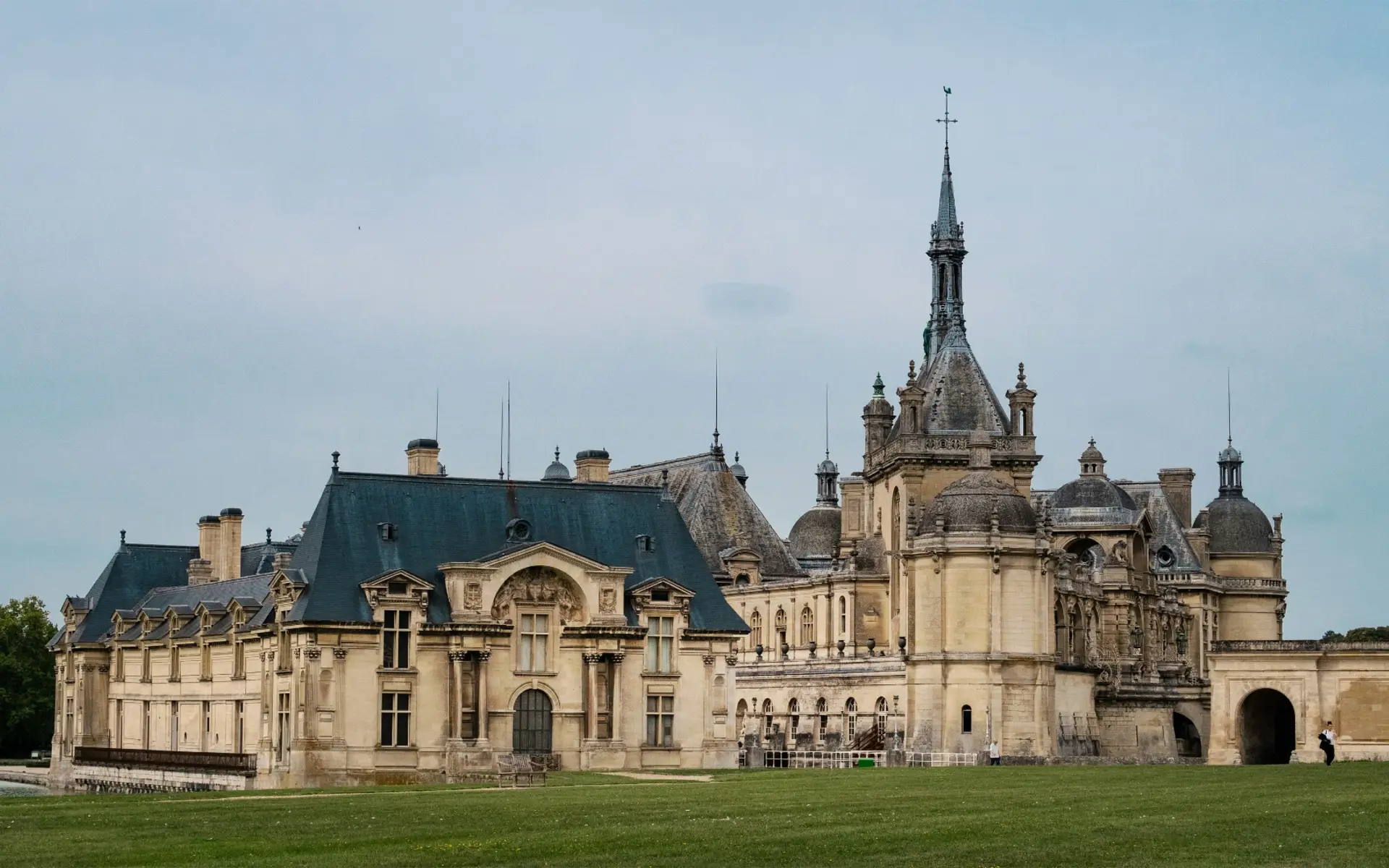
Only 25 minutes from Paris, Chantilly’s castle and art collection rival many museums. Its 16th-century chateau houses one of France’s greatest art collections outside the Louvre, featuring works by Raphael and Delacroix. Don’t miss the exquisite Chantilly cream, a local specialty served fresh in the chateau’s cafes.
Important details
- Open Wednesday–Monday, 10am–6pm (April–October) and until 5pm (November–March). Closed Tuesdays.
- Combined tickets include access to the gardens and Horse Museum.
Parc de Sceaux

Perfect for a half-day escape, Parc de Sceaux offers a peaceful retreat without ever leaving Île-de-France. With manicured gardens and open lawns designed by André Le Nôtre, the landscape architect behind Versailles, it’s a local favorite for picnics and leisurely walks.
- Main attractions: Château de Sceaux, Gardens by Le Nôtre, park trails
- Distance from Paris: ~6 miles (30 minutes)
- Transportation: RER B train to Sceaux station
Important details
- Open daily, free entry, 7am–8:30pm (later in summer).
- The Château de Sceaux museum is open Wednesday–Monday, 10am–6pm.
- The cherry blossoms in April draw large crowds—arrive early for photos.
Dijon
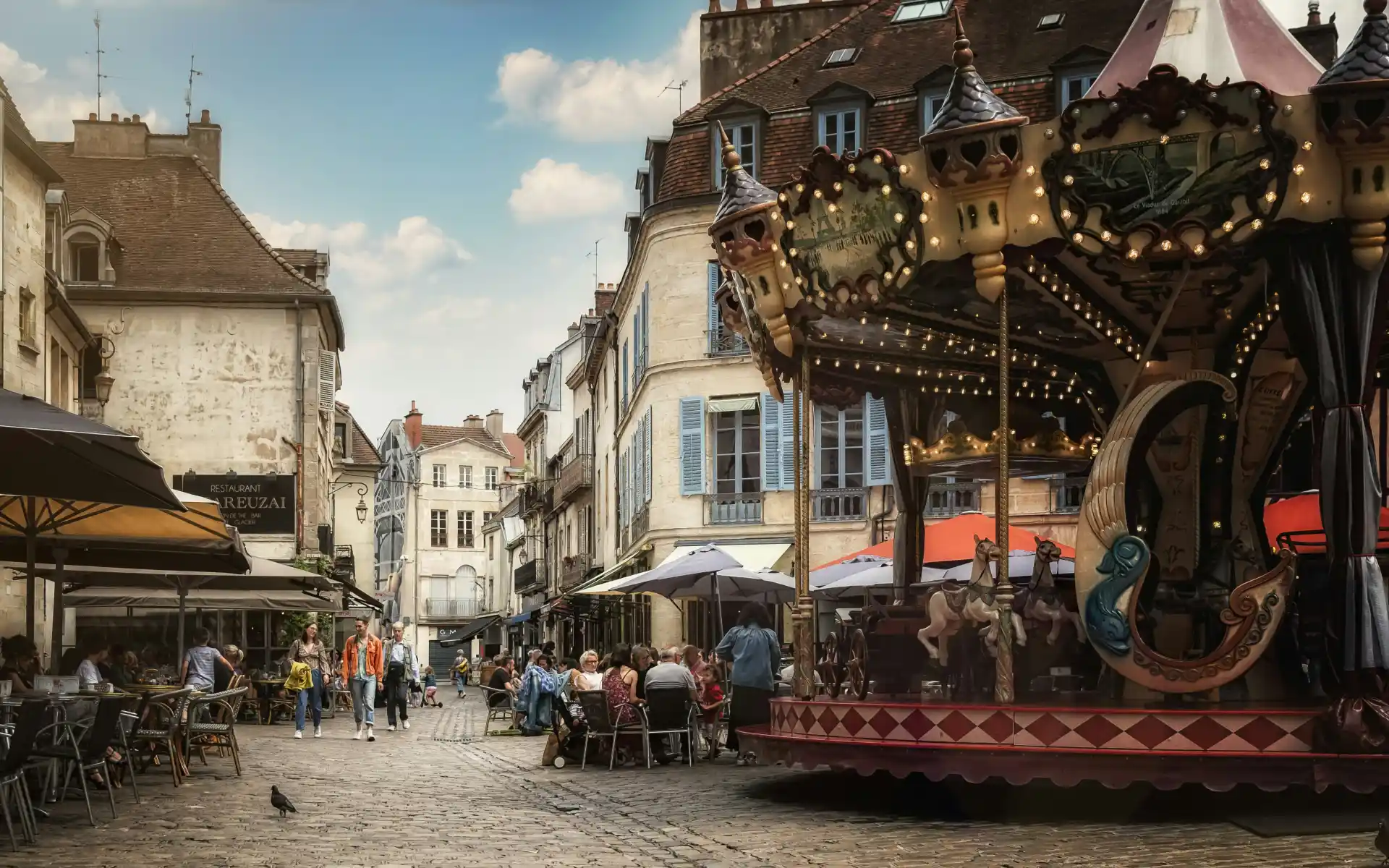
Known for mustard and medieval architecture, Dijon is the capital of Burgundy and a gateway to one of France’s finest wine regions. Its compact old town, covered market, and museums make it worth the 1.5-hour train ride. Between wine tastings, art, and history, Dijon offers a perfect blend of culture and gastronomy.
- Main attractions: Palace of the Dukes of Burgundy, Les Halles Market, wine tastings
- Distance from Paris: ~195 miles (1.5 hours)
- Transportation: High-speed TGV from Gare de Lyon
Important details
- Musée des Beaux-Arts is open daily except Tuesdays, free entry.
- The Owl Trail is self-guided and available year-round.
- Many wine cellars and tasting rooms close Sundays.
Best international day trips from Paris
Bruges, Belgium
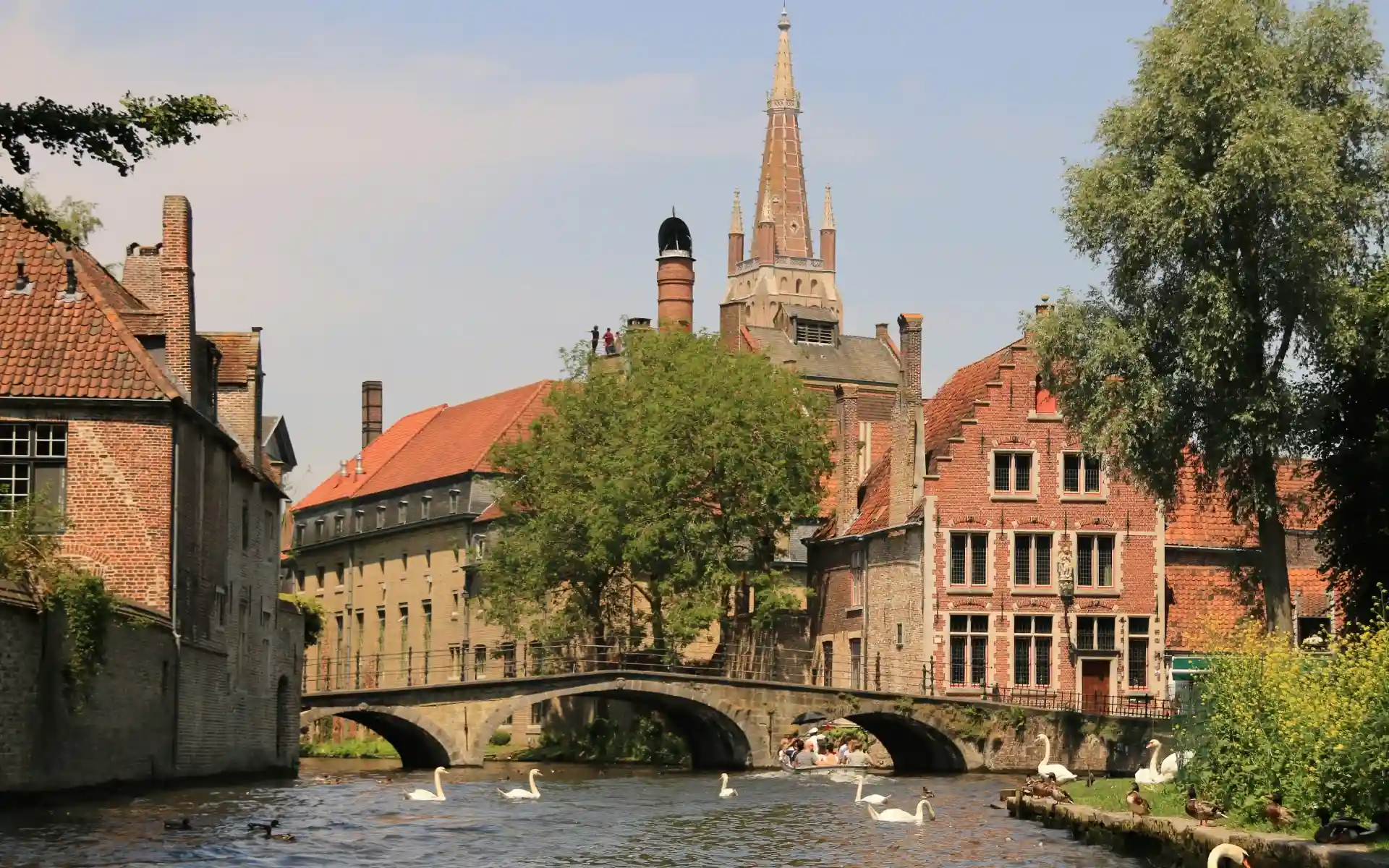
Often called the “Venice of the North,” Bruges is a fairytale city where cobblestone lanes, canals, and gabled houses transport you to another era. Just over 2.5 hours from Paris by train, it’s perfect for a day of medieval charm, Belgian chocolate, and scenic boat rides.
- Main attractions: Market Square, Belfry Tower, canal cruises
- Distance from Paris: ~185 miles (2.5 hours)
- Transportation: Train via Brussels
Important details
- Most museums and attractions (like the Belfry Tower and Groeningemuseum) are open daily, typically 10am–6pm.
- Canal boat tours operate March–November; winter hours vary depending on weather.
Brussels, Belgium
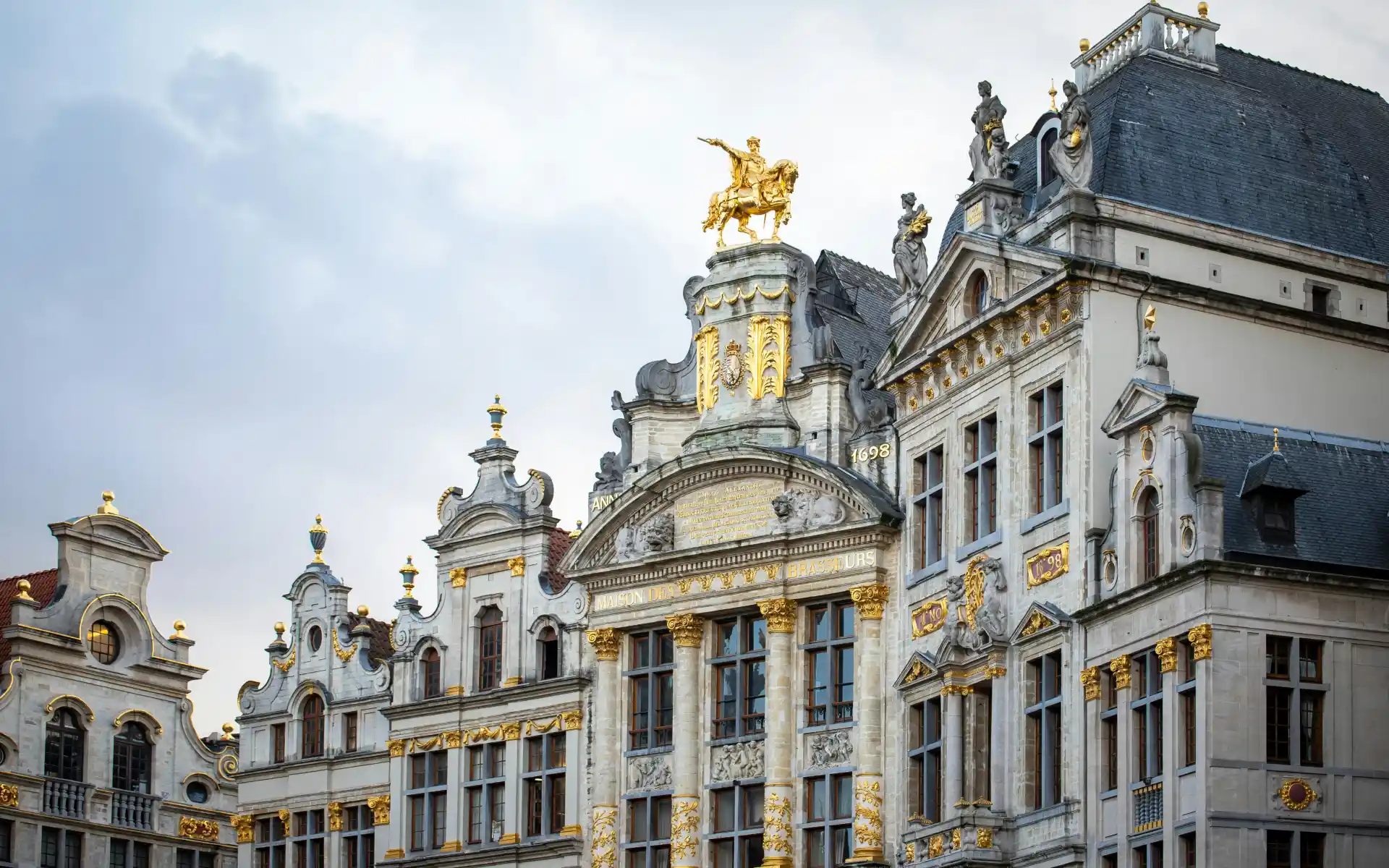
Belgium’s capital has an undeniable charm. In just 1.5 hours by high-speed train from Paris, you can stand in the Grand Place, one of Europe’s most stunning squares, admire Magritte’s surrealist works, and sample the country’s famous chocolates and waffles.
- Main attractions: Grand Place, Atomium, Royal Palace
- Distance from Paris: ~200 miles (1.5 hours)
- Transportation: High-speed Thalys
Important details
- The Grand Place is open year-round and illuminated nightly; the Atomium is open daily, 10am–6pm.
- Museums like Magritte Museum and Royal Museum of Fine Arts are closed on Mondays.
- Most government buildings and attractions offer free or discounted admission on the first Wednesday of each month.
Luxembourg City, Luxembourg
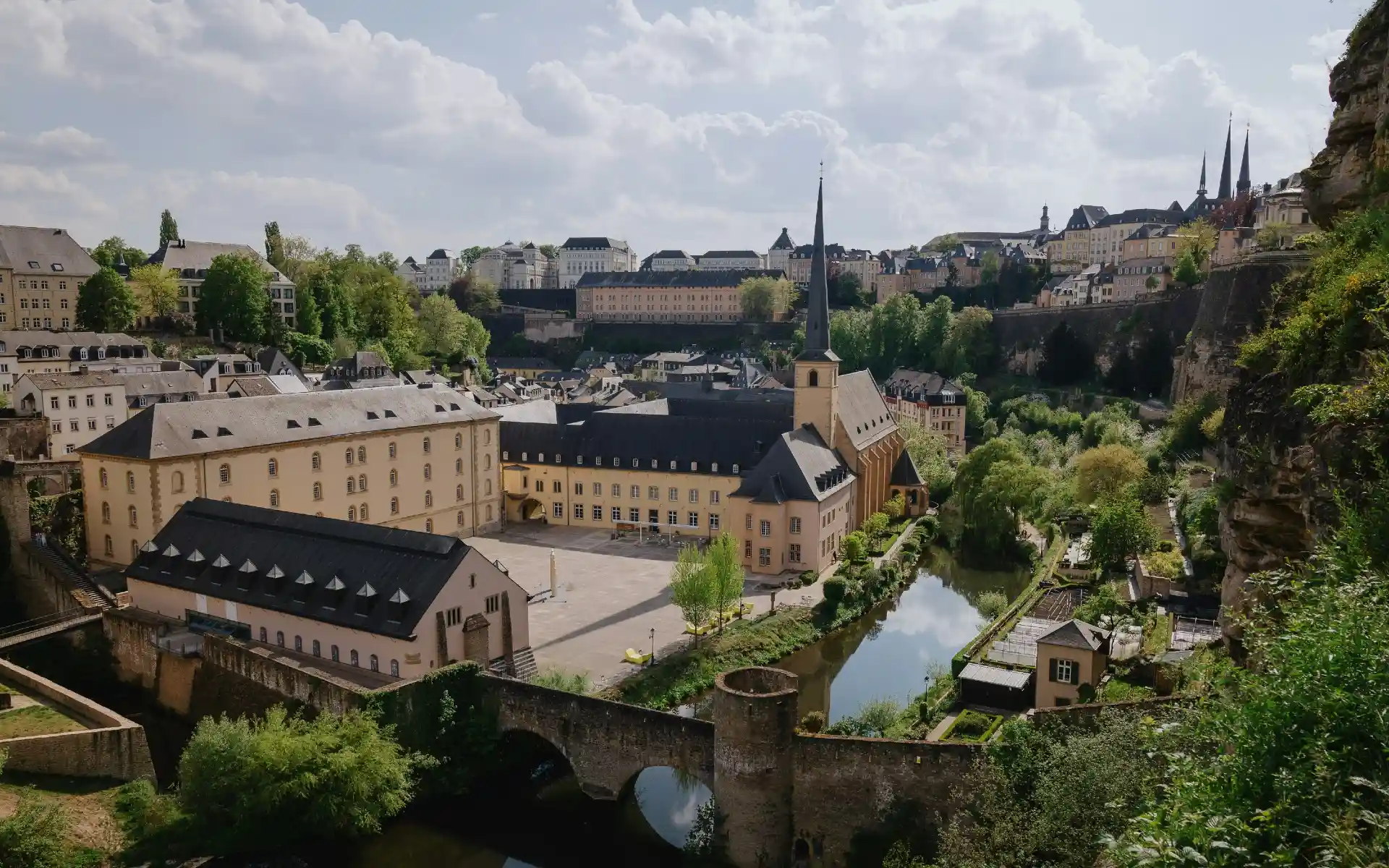
This tiny yet cosmopolitan capital delivers a surprising mix of history and culture. Set dramatically on cliffs above deep river valleys, Luxembourg City offers panoramic views of ancient fortifications and elegant boulevards. Trains take just over two hours from Paris.
- Main attractions: Casemates du Bock, Old Town, Grand Ducal Palace
- Distance from Paris: ~230 miles (2 hours)
- Transportation: High-speed TGV
Important details
- The Old Town and Casemates du Bock are open to visitors year-round; underground tunnels typically open March–November.
- Free guided walking tours are available through the tourism office.
- The Luxembourg City Museum opens Tuesday–Sunday, 10am–6pm.
- Luxembourg’s public transport system (buses, trams, trains) is completely free, making local travel simple.
Amsterdam, Netherlands

While it’s a longer journey, Amsterdam’s efficient Thalys train connection (3 hours and 20 minutes) makes a day trip doable—and worth every minute. The city is an atmospheric maze of canals, bridges, and bike paths, with world-class museums like the Van Gogh Museum and Rijksmuseum adding artistic depth to its charm.
- Main attractions: Anne Frank House, Rijksmuseum, Canal Belt
- Distance from Paris: ~320 miles (3 hours)
- Transportation: High-speed Thalys
Important details
- The Rijksmuseum and Van Gogh Museum are open daily, 9am–6pm; advance online booking is required for both.
- The Anne Frank House requires timed-entry tickets, sold online only and often weeks in advance.
- Canal cruises run all year; winter evening lights tours operate November–January.
London, UK
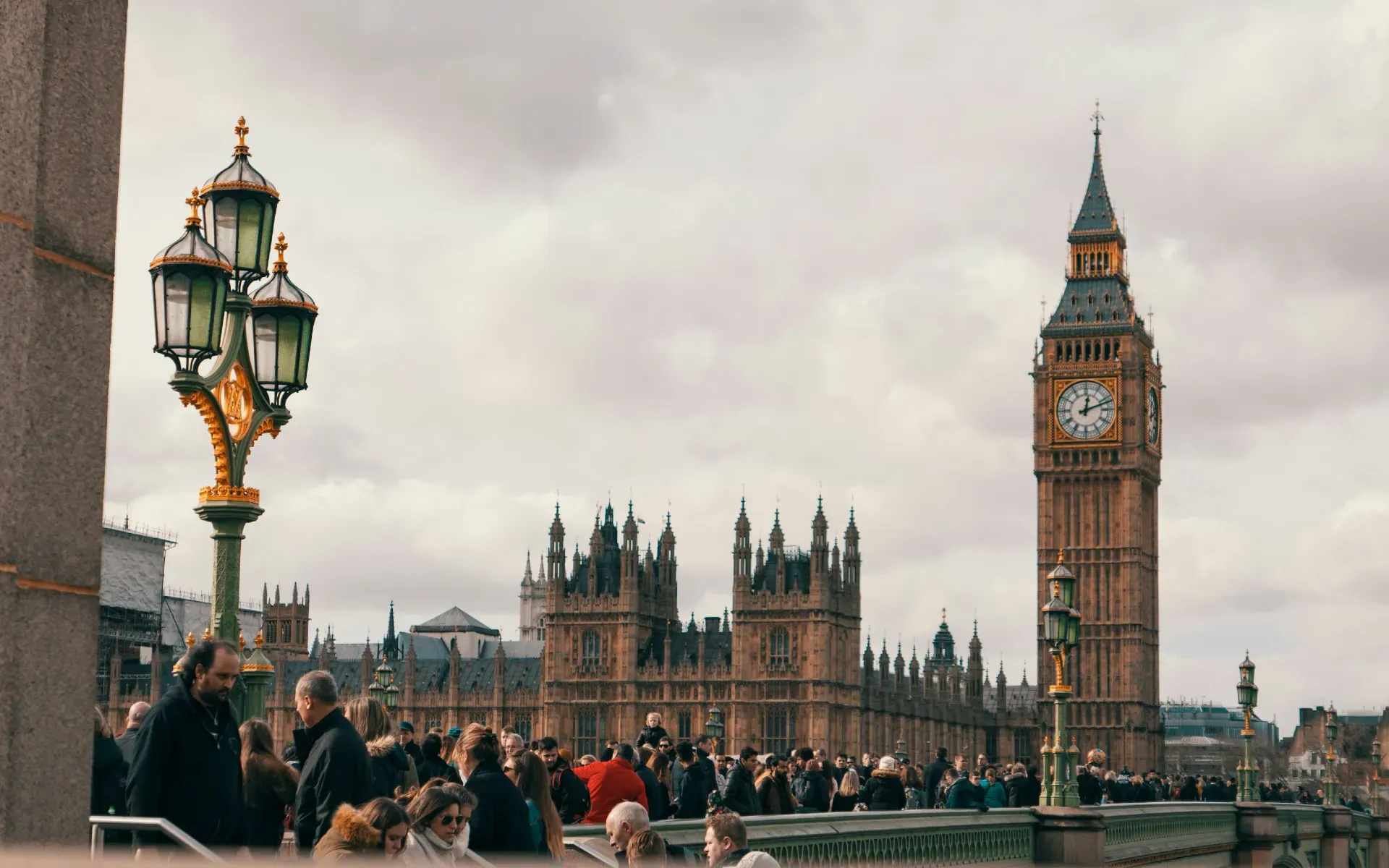
In just over two hours, you can travel across the Channel to one of the world’s most dynamic cities. London hums with energy—from the British Museum and West End theaters to festive holiday markets along the South Bank. Stroll through Covent Garden, see the Changing of the Guard at Buckingham Palace, or take in skyline views from the London Eye.
- Main attractions: British Museum, Tower Bridge, Buckingham Palace
- Distance from Paris: ~280 miles (2.5 hours)
- Transportation: Eurostar from Gare du Nord
Important details
- Major attractions like the Tower of London, Westminster Abbey, and British Museum open daily (most 9am–5pm).
- Contactless cards work seamlessly for public transport on the Underground and buses.
- Some museums are free to enter; guided walking tours are widely available.
Cologne, Germany

Although a bit farther afield (around three hours by train), Cologne rewards travelers with a perfect blend of history, culture, and festive spirit. Visit its towering cathedral, riverside promenades, and Christmas markets if traveling in winter. This city perfectly captures the warmth and charm of western Germany.
- Main attractions: Cologne Cathedral, Old Town, Rhine River promenade
- Distance from Paris: ~310 miles (3 hours)
- Transportation: High-speed Thalys
Important details
- Cologne Cathedral is open daily, 6am–8pm, with free entry; tower access costs a few euros.
- The Chocolate Museum and Roman-Germanic Museum are open Tuesday–Sunday, 10am–6pm.
- Cologne’s famous Christmas Markets run late November through December 23.
A weekend itinerary around Paris
Brussels and Bruges
A weekend in Belgium gives you the perfect balance of cosmopolitan flair and storybook charm. Start your journey in Brussels, where you can admire the ornate Grand Place, visit the surreal Magritte Museum, and sample waffles or chocolate from local artisans.
From there, hop on a quick train to Bruges, just over an hour away. Its medieval streets, tranquil canals, and historic Belfry Tower transport you to another era. Take a canal cruise, browse lace and chocolate shops, and visit the Groeningemuseum for Flemish art. Evenings are magical when Bruges’ cobblestone streets glow under golden lights—perfect for a quiet dinner before returning to Paris.
Brussels and Amsterdam
Combine the cultural sophistication of Brussels with the creative energy of Amsterdam. Begin your weekend in Brussels exploring the Grand Place, savoring local beer at Delirium Café, and indulging in fries from a street stand. History lovers can visit the Royal Palace or Atomium, while art fans will enjoy the Horta Museum and comic murals scattered around the city.
A high-speed train connects you to Amsterdam in less than two hours. Once there, rent a bike to explore the canal belt, visit the Anne Frank House, and browse masterpieces at the Rijksmuseum and Van Gogh Museum. Enjoy dinner at a cozy canalside cafe, and end the night with a leisurely evening cruise through Amsterdam’s illuminated waterways.
Luxembourg and Frankfurt
This itinerary mixes the quaint beauty of Luxembourg with the dynamic energy of Frankfurt. Luxembourg City charms visitors with its clifftop views, the Casemates du Bock, and peaceful Old Town streets lined with pastel buildings. Spend your first day walking the Chemin de la Corniche, dubbed “Europe’s most beautiful balcony,” before trying hearty local dishes in a wine tavern.
From Luxembourg, it’s a short train ride to Frankfurt, a financial hub with an old-world heart. Visit Römerberg Square for half-timbered architecture, stroll along the Main River, and tour the Städel Museum for European art spanning seven centuries. Frankfurt’s lively cafes and skyline views offer a perfect contrast to Luxembourg’s calm.
Dijon and Lyon
This route is a must for food and wine enthusiasts. Begin in Dijon, the capital of Burgundy, famous for mustard, medieval streets, and elegant architecture. Follow the Owl Trail, a self-guided walking route through the city’s main landmarks, from the Palace of the Dukes of Burgundy to lively markets like Les Halles. Don’t miss a local wine tasting or regional specialties like boeuf bourguignon.
Then continue by train to Lyon, France’s gastronomic capital. Here, centuries of culinary tradition come alive in the city’s bouchons (traditional restaurants). Explore Vieux Lyon, a UNESCO-listed district filled with Renaissance architecture and hidden traboules (passageways).
London and Birmingham
Take the Eurostar from Paris and arrive in London in just over two hours. Spend your first day exploring iconic locations like Buckingham Palace, Tower Bridge, and the British Museum. Take a stroll along the South Bank, catch a West End show, or enjoy afternoon tea in Covent Garden. London’s neighborhoods each have their own unique vibe, so you’re bound to find what you’re looking for.
Next, catch a short train to Birmingham, a rising cultural destination known for its canals, creative scene, and vibrant food markets. Visit the Birmingham Museum and Art Gallery, explore the Custard Factory for indie shops and street art, and indulge in global cuisine at the city’s famous Balti Triangle. This weekend trip balances London’s grandeur with Birmingham’s contemporary energy, giving you a well-rounded taste of modern Britain.

Travel in and around Paris with Going
With so many incredible destinations within easy reach, Paris is the perfect base for exploring France and beyond. Whether you’re planning a day trip to Giverny or a weekend across the border, Going helps make it affordable. Members save on average 40–50% on flights to Paris—and with those savings, you can see more of Europe without stretching your budget.
*The original article, written by Danette St. Onge, has been modified to include additional valuable tips and recommendations for travelers.
Last updated November 24, 2025

